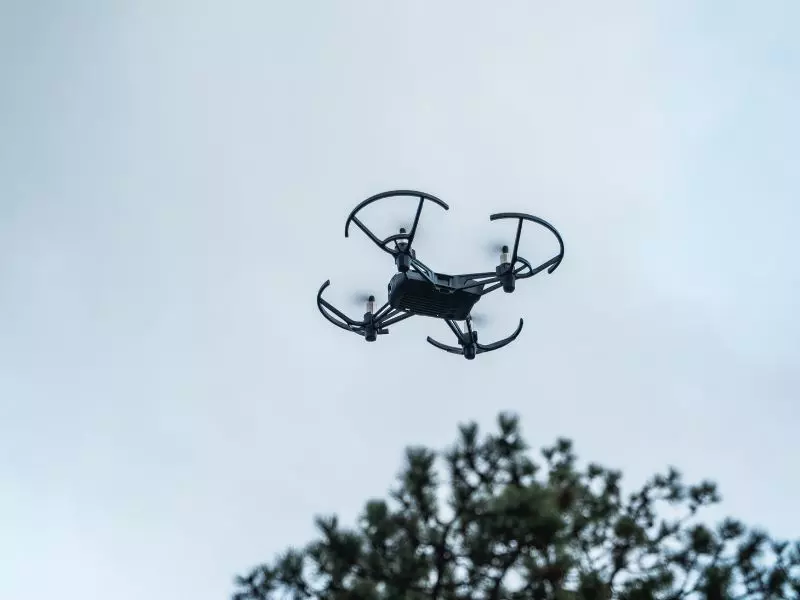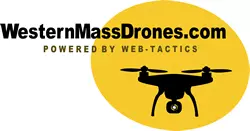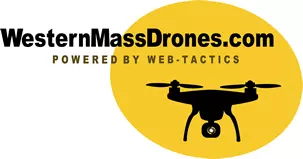How Drones are Transforming Commercial Advertising

As a result, the advertising industry is witnessing a paradigm shift, with drone photography enabling more creative and innovative campaigns that captivate audiences and deliver powerful messages. This article will explore how drones are transforming the world of commercial advertising, the potential benefits and challenges of using this technology, and the future implications for both creative professionals and the advertising landscape. By understanding the impact of drones on commercial campaigns, advertisers can harness the potential of this technology to create truly unforgettable experiences.
The Benefits of Drone Technology in Advertising
As drone technology advances and becomes more accessible, its impact on various industries is undeniable. Drones have emerged as a game-changing tool in advertising, offering new possibilities for creative expression and storytelling. Drones transform how commercial campaigns are designed and executed, from capturing stunning aerial views to accessing hard-to-reach locations. This section will explore some key benefits of incorporating drone technology into advertising.
Aerial perspectives for more dynamic visuals
One of the most significant benefits of using drones in advertising is the ability to capture stunning aerial perspectives that were once limited to expensive helicopter or crane shots. With drones, advertisers can showcase their products and services in a more visually appealing and dynamic manner. Aerial photographs captured by drones can provide a fresh and captivating perspective, allowing advertisements to stand out and make a lasting impression on viewers.
Reduced production costs compared to traditional methods
Traditionally, aerial photography and videography required helicopters, cranes, or other costly equipment, often leading to inflated production budgets. Drones have revolutionized the advertising industry by offering a more cost-effective alternative without sacrificing quality. The reduced cost of drones allows advertisers to allocate more resources to other aspects of their campaigns, such as creative direction, post-production, and marketing efforts, ultimately resulting in more polished and engaging advertisements.
Flexibility and agility for capturing unique shots
Drones provide flexibility and agility that is unmatched by traditional photography and videography methods. They can easily maneuver in tight spaces, hover at various altitudes, and follow fast-moving subjects, allowing advertisers to capture unique and creative shots. This flexibility enables advertisers to experiment with different angles and compositions, leading to more innovative and visually captivating advertisements.
Access to previously inaccessible locations
Drones have opened up new possibilities for advertisers by allowing them to access previously tricky or impossible locations with traditional equipment. Whether capturing breathtaking scenery from a remote mountaintop or filming a car commercial on a secluded beach, drones make it easier for advertisers to create unique content that sets their campaigns apart. This ability to explore new and unique locations enhances the visual appeal of advertisements and provides a competitive edge in an industry where standing out is essential.
Successful Drone-Enabled Advertising Campaigns
Automotive industry commercials
Drones have significantly impacted the automotive industry by adding a new level of dynamism to commercials. Drone photography allows viewers to see vehicles in action from unique angles, capturing breathtaking aerial views and dramatic footage of cars traversing challenging terrains. For instance, Land Rover's commercial campaign showcasing their off-road capabilities utilized drones to provide a bird's-eye view of the vehicles conquering mountains, rivers, and deserts, emphasizing their ruggedness and versatility.
Travel and tourism promotions
The travel and tourism industry has embraced drone technology to create visually stunning promotional material that captures the essence of various destinations. Using drones, advertisers can offer potential tourists immersive experiences, showcasing natural wonders, architecture, and cultural events from unique perspectives. A notable example is the "Visit Iceland" campaign, where drones were employed to capture the country's breathtaking landscapes, from geysers and waterfalls to volcanic beaches, enticing viewers to plan their next vacation to the land of fire and ice.
Sports and outdoor recreation advertisements
Drones have enhanced sports and outdoor recreation advertising by capturing dynamic, action-packed footage. This technology has enabled advertisers to showcase athletes' skills and the excitement of outdoor activities more captivatingly. A prime example is Red Bull's advertisement campaigns, which use drones to film extreme sports, such as mountain biking, snowboarding, and cliff diving. These aerial shots showcase the intensity and thrill of these activities, inspiring viewers to participate and seek adventure.
Real estate marketing
Drone real estate photography has become a game-changer by offering a comprehensive view of properties and their surroundings. High-quality aerial images and videos help potential buyers better understand the property layout, scale, and location within the neighborhood. Luxury real estate developers, in particular, have embraced this technology to create stunning visual presentations of their properties, highlighting unique features such as swimming pools, extensive gardens, and scenic views. For example, drone footage was successfully employed in marketing the expansive Star Island development in Miami, showcasing the opulent mansions and their breathtaking waterfront locations.
Challenges and Considerations for Drone Use in Advertising
While drones have undeniably transformed the advertising world, several challenges and considerations must be addressed to ensure their responsible and effective use. These include legal and regulatory constraints, privacy concerns, weather and environmental factors, and safety and risk management.
Legal and Regulatory Constraints
Drone use in advertising is subject to various laws and regulations that differ from country to country and even between local jurisdictions. Some common regulatory aspects include altitude limitations, no-fly zones, and the requirement for drone pilots to hold specific licenses or certifications. Before embarking on a drone-enabled advertising campaign, businesses must familiarize themselves with the relevant laws and ensure full compliance to avoid penalties or legal action.
Privacy Concerns and Ethical Considerations
As drones can easily capture images and videos from a bird's-eye view, privacy concerns arise regarding the potential invasion of personal spaces. Advertising campaigns must be conscious of these concerns and respect the privacy of individuals and properties. This process may involve obtaining permission from property owners or avoiding the capture of private spaces altogether. Balancing the need for captivating visuals with ethical considerations is essential to maintain trust and goodwill with the public.
Weather and Environmental Factors
Drones are sensitive to weather conditions like rain, wind, and extreme temperatures. These factors can impact the drone's stability, battery life, and overall performance. Planning for contingencies in case of unfavorable weather conditions is vital to ensure the success of a drone-enabled advertising campaign. Additionally, considering the environmental impact of drone use, such as potential disturbances to wildlife or natural habitats, is crucial for responsible operation.
Safety and Risk Management
The use of drones in advertising campaigns comes with inherent safety risks, such as the possibility of collisions, crashes, or loss of control. Mitigating these risks requires proper training for drone pilots, adhering to safety guidelines, and maintaining their drones regularly, pre-flight checks, including assessing the drone's condition and surveying the environment for potential hazards, can help ensure a safe and successful flight. Furthermore, having insurance coverage for drone-related accidents can protect businesses from potential financial losses.
To summarize, while drones offer significant advantages in advertising, businesses need to address challenges and consider various factors in their use. By navigating legal and regulatory constraints, respecting privacy concerns, planning for weather and environmental factors, and prioritizing safety, businesses can harness the full potential of drones to create innovative and captivating advertising campaigns.
The Role of Drone Pilots and Creative Professionals
As drones continue to reshape the landscape of commercial advertising, it is vital to examine the roles and responsibilities of the creative professionals behind these captivating campaigns. From the growing demand for skilled drone pilots to the collaborative efforts between photographers, videographers, and drone operators, let's explore how these professionals work together to bring innovative, drone-enabled advertising content to life while emphasizing the importance of storytelling in creating memorable and engaging campaigns.
The growing demand for skilled drone pilots
As drone technology revolutionizes commercial advertising, the demand for skilled drone pilots has also surged. Companies are seeking individuals with technical expertise and creativity to capture dynamic aerial footage that can elevate their marketing campaigns. This growing need has led to expanding drone pilot training programs and certification courses, ensuring pilots are well-versed in regulations, flight safety, and best practices.
Collaborations between photographers, videographers, and drone operators
Integrating drones into commercial advertising campaigns often requires collaboration among photographers, videographers, and drone operators. Working together, these creative professionals can blend their unique skill sets and perspectives to develop innovative, visually striking campaigns. This interdisciplinary approach allows for the seamless merging of ground-level and aerial shots, resulting in more cohesive and engaging advertising content.
The importance of storytelling in drone-enabled advertising
While the technical aspects of drone operation are essential, storytelling remains a critical component in successful advertising campaigns. Drone pilots and creative professionals must work together to craft compelling narratives that resonate with target audiences. By using drone footage to support the central message of a campaign, advertisers can create an immersive experience that captures the viewer's attention and encourages a deeper emotional connection with the brand.
Drones can enhance visual storytelling in advertising, allowing for more innovative and memorable campaigns. This collaboration between drone pilots and creative professionals elevates the visual content and pushes the boundaries of what is possible in commercial advertising.
The Future of Drones in Advertising
As drone technology continues to evolve, the advertising industry is poised to benefit from various new possibilities and advancements. In this section, we'll explore the future of drones in advertising, touching on the potential integration with augmented reality (AR) and virtual reality (VR), as well as the shifting landscape of the advertising field due to these technological developments.
Technological advancements and their implications
-
Improved battery life and flight capabilities: As drone technology advances, longer flight times and improved stability will enable more complex and sophisticated advertising campaigns.
-
Enhanced camera technology: Higher-resolution cameras and advanced image stabilization features will lead to more visually stunning advertisements.
-
AI and machine learning: Integration of artificial intelligence could allow for real-time data analysis and improved decision-making during shoots, resulting in more efficient and targeted ad campaigns.
The integration of drones with augmented reality (AR) and virtual reality (VR)
-
Immersive experiences: Combining drone footage with AR and VR technology will create truly immersive and interactive advertising experiences for consumers, allowing them to engage with products and services in new ways.
-
Customized content: Drones could capture personalized footage for specific target audiences, offering tailored advertising content to individual consumers.
-
Virtual tours and product demonstrations: Drones could play a pivotal role in creating realistic virtual tours and demonstrations, allowing potential customers to experience products or locations without physically being present.
Potential shifts in the advertising landscape as drone technology evolves
-
The rise of experiential marketing: Drones could help facilitate a shift toward more experiential marketing campaigns, emphasizing the creation of memorable and engaging experiences for consumers.
-
Increased accessibility for small businesses: As drone technology becomes more affordable and accessible, small businesses can leverage aerial advertising techniques, leveling the playing field with larger competitors.
-
New storytelling opportunities: Drone-enabled campaigns will continue to push the boundaries of creativity, opening up new storytelling possibilities for advertisers and fostering unique connections with audiences.
Conclusion
In conclusion, drone photography and technology have undeniably transformed the world of commercial advertising by providing unique aerial perspectives, reduced production costs, and unparalleled flexibility for capturing captivating visuals. As the industry continues to evolve, staying informed about the latest technological advancements and their implications for advertising campaigns is crucial. Integrating drones with emerging technologies like augmented reality (AR) and virtual reality (VR) offers exciting possibilities for advertisers, potentially leading to further shifts in the advertising landscape. With the growing demand for skilled drone pilots and creative professionals, collaboration between these experts will play a vital role in shaping the future of advertising. As we embrace the power of drones in commercial photography, it is essential to remain mindful of the challenges, such as legal constraints, privacy concerns, and safety issues, to ensure a responsible and ethical approach to this rapidly growing field.

